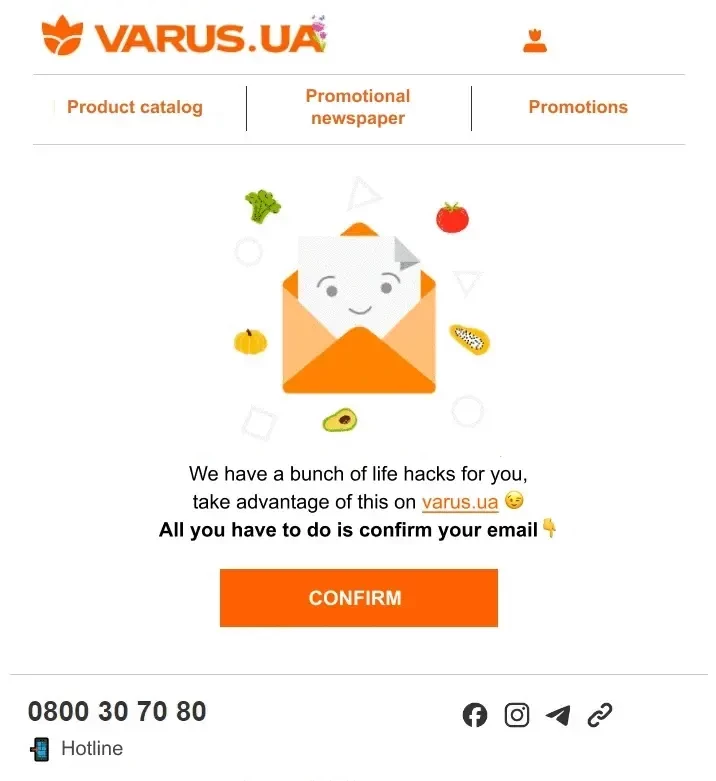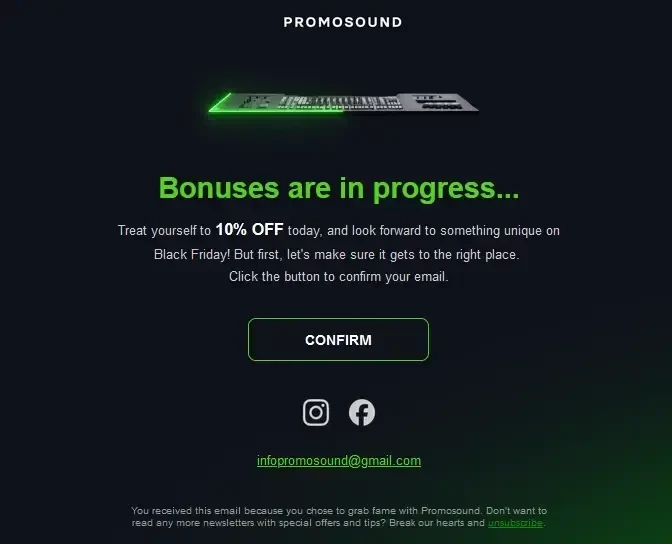Email Address
Whether you are registering on a social network or closing a multimillion-dollar deal, an email address is the passport that lets messages travel to and from you. It sits at the heart of digital identity, quietly doing the heavy lifting every time you click “Send.”
What is an Email Address
An email address is a unique identifier that instructs mail servers where to send and receive messages. SMTP, POP3, and IMAP are the most important open protocols. They consider each address as a point on the world's digital map, so they may send and receive messages from any other conforming node. The system doesn't care what platform you're using, so the same login information you used in 2008 may still get you job offers, family photographs, and bills now. That's why marketers view every verified email address as a valuable means of contacting a person.
How Email Addresses Work
Sending: SMTP in Action
When you press Send, your client hands the message and recipient email address to an outgoing server that speaks the Simple Mail Transfer Protocol. The server checks the domain part of that address, consults DNS for its MX record, and relays the envelope through a chain of hosts until it reaches the destination provider. Each hop uses TLS to keep data private, while SPF and DKIM prove the sending domain wasn’t forged.
Receiving: POP3 and IMAP
Once the message lands, incoming servers store it until the owner logs in. With POP3, a device downloads and often deletes local copies; IMAP keeps a synced view across phones, tablets, and desktops. Either way, the authenticating email address must match the mailbox, completing a loop that started milliseconds earlier on the other side of the planet.
Structure of an Email Address
Local Part (User Name)
Everything before “@” is the local part. It can contain periods, plus signs, or underscores, but simpler is safer because spam filters scrutinize exotic characters. A colleague can read jane.doe at a glance; nobody memorizes jané$$42.
Domain Part (SLD + TLD)
After “@” comes the domain: the second-level domain you bought from a registrar plus a top-level domain such as .com, .io, or .shop. DNS then publishes MX records so the world knows where to deliver messages aimed at any email address in that namespace. Technically, the local part is case sensitive, but nearly every service treats upper and lower case as identical, sparing users needless errors.
Types of Email Addresses
Personal vs. Professional Email Addresses
You may get a personal email address from services like Gmail, Outlook.com, Neo or Proton. Its objective is to keep in touch with family and friends via ordinary things like family shots, ride-share receipts, and those newsletters you intended to read but forgot about. A professional counterpart uses a branded domain—alex@yespo.io, for instance—and doubles as a calling card. It tells customers you’ve invested in your identity and likely handle data responsibly. Freelancers sometimes blend the two: a friendly alias on a custom domain that still forwards to Gmail.

Disposable and Temporary Emails
Disposable services generate a throw-away email address that expires in minutes or days. They’re lifesavers when you need a quick download from a site you don’t trust, but they wreak havoc on email marketing metrics because follow-up messages bounce once the mailbox self-destructs.
Email Aliases and Role-Based Addresses
Aliases forward messages from one email address to another. A small e-commerce shop might route returns@ and press@ to the founder’s inbox while maintaining the illusion of dedicated departments. Larger teams lean on role-based addresses—support@, info@, billing@—so inquiries land in shared queues. From a marketer’s viewpoint, such mailboxes dilute personalization because no single human owns them. Segment them carefully or exclude them from behavior-based email campaigns.
Beyond the Basics
Modern collaboration adds still more flavors: plus-tagging (user+event2025@domain.com) lets people create filters without registering a new email address, and catch-all domains accept any string before “@.” Handy internally, they’re hazardous publicly because spammers harvest random permutations.
Importance of Email Addresses in Communication
Unlike a social-media handle that may disappear with the next algorithm change, an email address is controlled by its owner or organization. That permanence fuels trust: investors expect term sheets from a corporate domain, not investor123@yahoo.com. HR managers verify that a candidate’s mailbox matches a résumé before sending sensitive data. And consumers view a branded sender line in a confirmation letter as proof they’re dealing with the actual store, not a spoof.
Email Addresses in Email Marketing
Every subscriber list begins with a volunteered email address, granting permission to enter a customer’s personal space—the inbox. Marketers then nurture that relationship through distinct campaign types:
- Welcome series—a friendly sequence that warms up new contacts with value first.

- Promotional blasts—limited-time offers designed to drive traffic within 24–72 hours. ESPs pair SKUs to purchase history stored in a Customer Data Platform (CDP).

- Cart recovery—triggered when an authenticated email address abandons items. Automation tools nudge at 1-hour and 24-hour intervals.

- Lifecycle drips—milestone-based messages (birthdays, replenishment cycles, renewals) pulled from behavioral events linked to the address.
- Transactional updates—confirmations, “thank you for your order” messages, shipping notifications, password resets. Though non-promotional, they keep the mailbox engaged and train ISP filters that your domain belongs in the inbox.
Personalization hinges on matching each record to an ESP or CDP profile. The email address acts as the primary key linking browse history, loyalty points, and predictive models. Advanced senders weave this data into subject lines (“Only two left in your size, Julia!”) or dynamic content blocks that swap images based on weather near the recipient. The essential toolbox: a robust ESP for templating and analytics, a CDP for stitching multi-channel data, and marketing-automation builders—native or third-party—to orchestrate timing.
Email Addresses and Deliverability
Common Issues Affecting Deliverability
A perfect subject line means nothing if the email address can’t accept mail. Hard bounces signal a nonexistent destination—often a typo like gmal.com. Soft bounces warn that the inbox is full or the server is down. Spam traps resemble valid addresses but exist only to catch senders who buy lists rather than earn them. Any spike in these metrics tells mailbox providers that your next email campaign might be junk, so they throttle or junk-folder future sends.
Maintaining Sender Reputation Through Verification and List Hygiene
Your domain and IP address have a sender reputation, which is like a credit score. Every unread email, every bounce, and every spam complaint erodes it, making it tougher to reach out to them later. Regular verification removes inactive or incorrect entries, double opt-in protocols ensure that the email address actually belongs to the subscriber, and sunset rules remove contacts who haven't opened an email in 180 days, for example. All of these steps lift deliverability so ISPs favor your next send.
Best Practices for Managing Email Addresses
Proper Formatting and Valid Syntax
Require exactly one “@,” prohibit spaces, and reject consecutive dots. Keep the local part under 64 characters and the entire email address under 254 to stay within RFC limits. These simple checks prevent many headaches before they start.
Using Double Opt-In
A confirmation email forces the would-be subscriber to click a verification link. This proves ownership of the email address and filters bots that stuff forms with random strings, which later bounce and tarnish your metrics.


Regular List Cleaning and Validation
Schedule quarterly audits through specialized validation services that ping the mail server without sending a real message. Flag role-based or disposable domains and invite those users to update to a primary mailbox. Remove hard bounces immediately; prune cold contacts gracefully with a re-activation series before deletion.
Security and Anti-Phishing Measures
Use SPF, DKIM, and DMARC so that those who receive your emails can be sure they are really from you. Teach workers to hover over from-lines: billing@yourbrand.com is secure, but billing@yourbrand.co, which is missing the last "m," is a common phishing scam. Multi-factor authentication on the mailbox itself protects hackers from taking over accounts and spreading viruses.
Final Thoughts
The unassuming email address is both a technical endpoint and a relationship token. Your email address deserves the same respect as any personal detail. When used correctly, it opens the door to customized shopping, timely notifications, and brand loyalty that can be evaluated by repeat purchases. If you don't take care of it, it might cause bounces, complaints, and damage to your reputation. Your marketing and your clients will reward you if you treat each interaction as the vital, human connection it actually is.
Join Our Blog Newsletter!
Stay updated with our latest email marketing tips, product news and case studies.